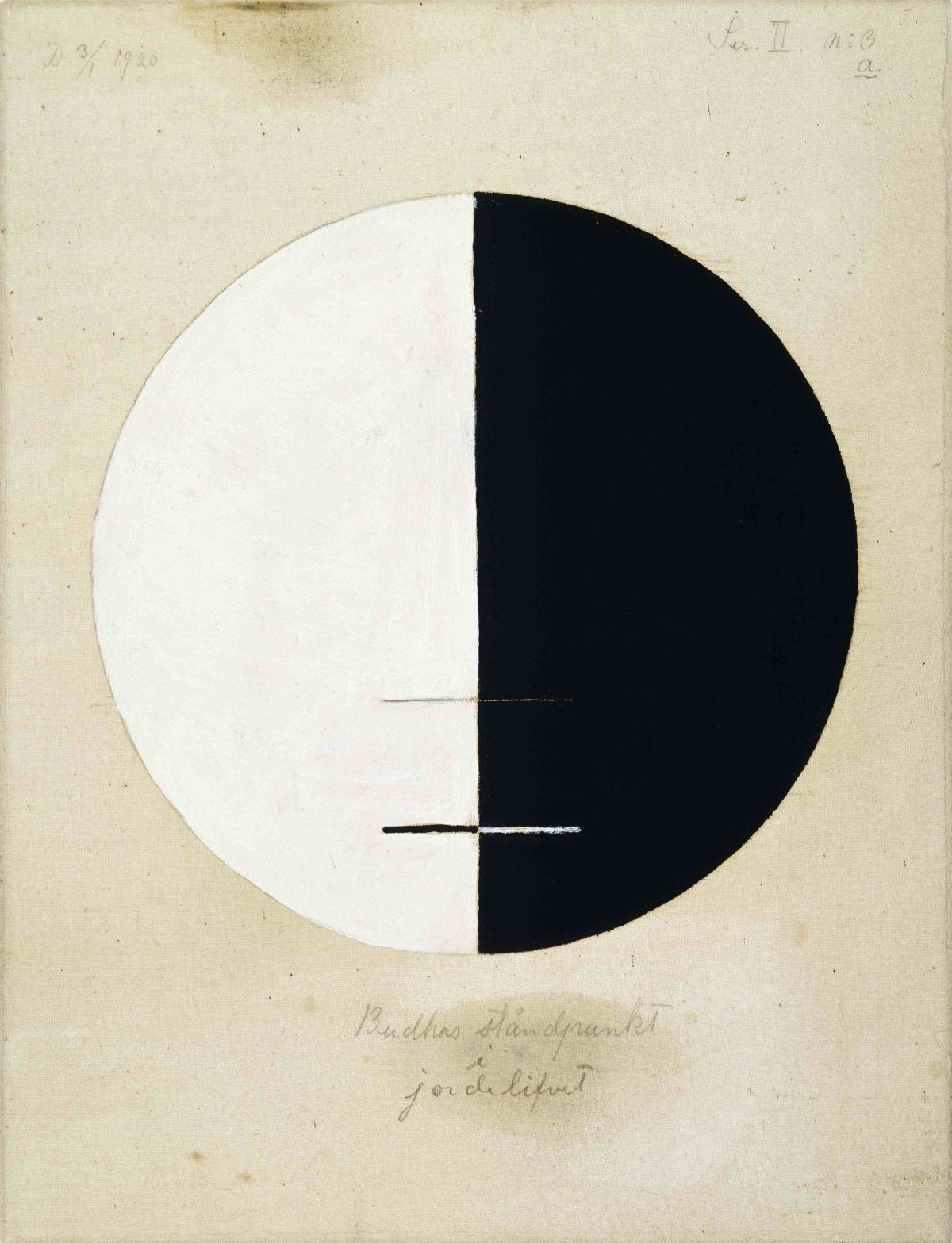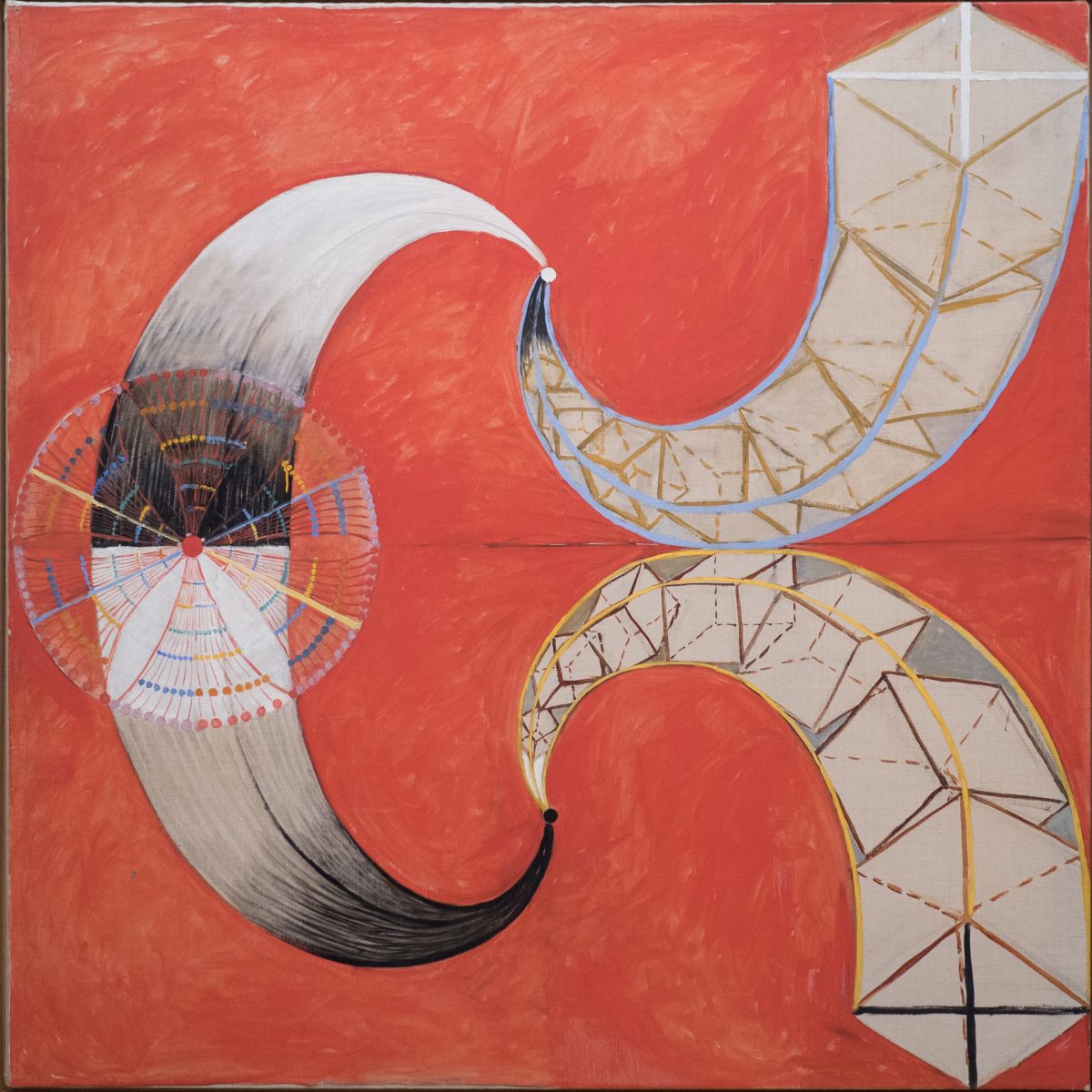When I told a colleague I was doing a story on Hilma af Klint, their first reaction was to ask: “Who?” Most of us know other tyros of abstract art, like Kandinsky, Mondrian, Malevich and Delaunay. You only need their surnames (right?). But Hilma af Klint (October 26, 1862 – October 21, 1944) passed us by.
Such is the lot of too many female artists, eclipsed by vain men. When Kandinsky wrote to his New York gallerist Jerome Neumann in December 1935, he was keen to establish as fact that he had painted his first abstract picture in 1911. “Indeed, it’s the world’s first ever abstract picture,” he wrote, “because back then not one single painter was painting in an abstract style. A ‘historic painting’, in other words.” Except it wasn’t true. Hilma af Klint got there first in 1906.
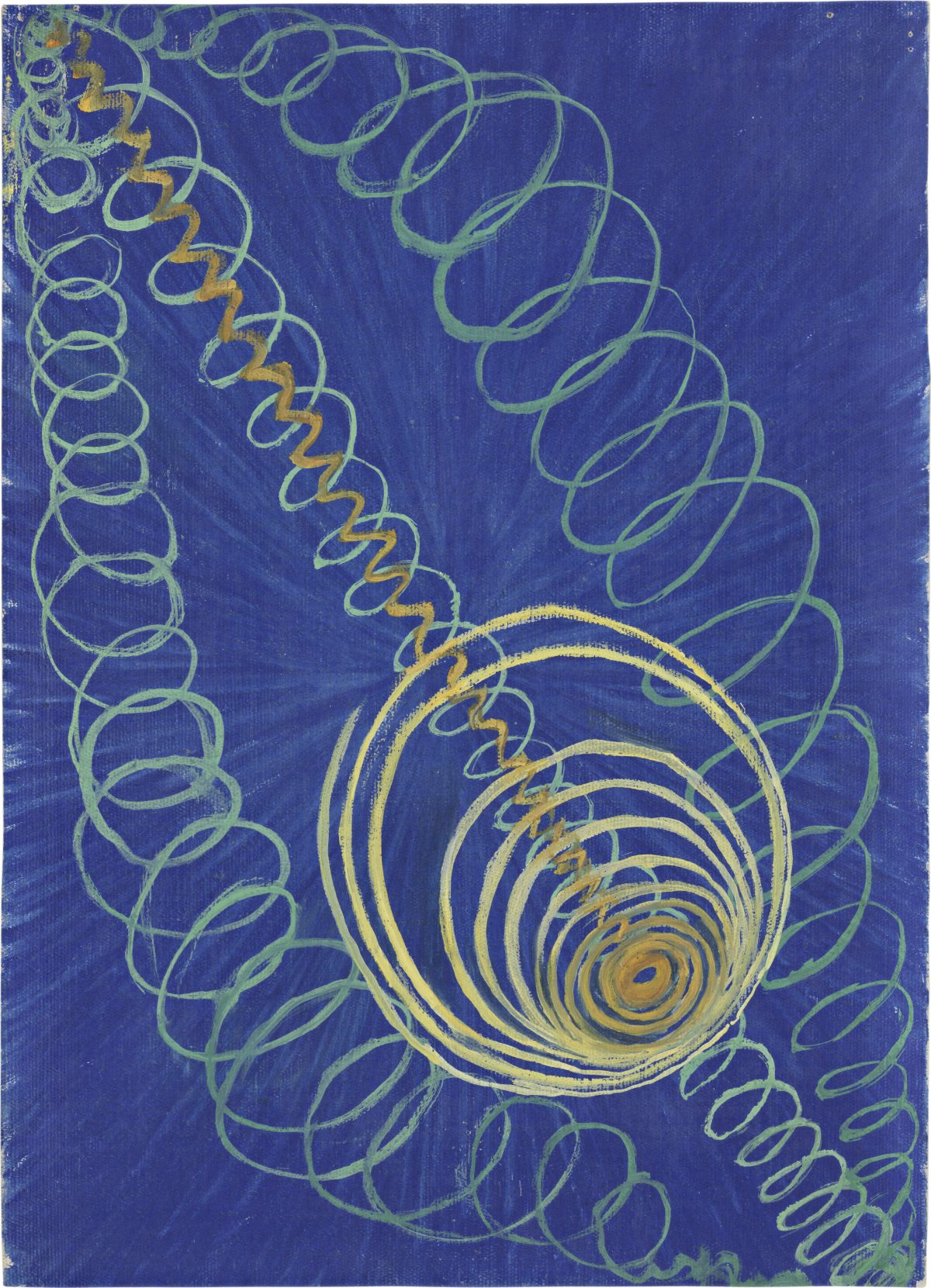
Hilma af Klint, Primordial Chaos, No. 16, The WU/ROSEN Series. Grupp 1, 1906-07
Thankfully, Klint’s father, an admiral in the Swedish naval, was neither a narcissist nor sexist and backed his daughter’s interest in art, supporting her move to study the subject at the Royal Academy of Fine Arts in Stockholm. At some point she encountered the popular and wholly esoteric theories of Madame Blavatsky’s theosophy. Here was the trigger for inspiration. Klint was 17 when she attend her first spiritualist seance. The effect marked a profound shift in her artistic development. Earning a living as a landscape artist, Klint began to tune into the cosmos. She set about trying to depict the invisible forces around us.
It was of its era. Infrared light, X-rays and electromagnetic currents and fields were all invisible forces identified, named and explained in Klint’s lifetime. And she was made to notice something else we sense but cannot see: she heard voices. A voice without a body told her: “‘You are to proclaim a new philosophy of life and you yourself are to be a part of the new kingdom. Your labours will bear fruit.”
Klint peeked through the doors of perception, and without the need for LSD painted what she was commissioned to produce. This is where it gets a bit weird. Her client was Amaliel, one of the so-called ‘High Masters’ Klint had reached via a seance. Klint and four artist pals who called themselves The Five (de Fem) tried, apparently with success, to communicate with lifeforms on the other side. Klint, the group’s founder and medium, was detailed to channel Amaliel’s mystic message and energy into the real. Her pen and brush worked without obvious intent, through a process Surrealists later called ‘automatic drawing’ – think of Emma Kunz’s divine pendulum creating art from vibes and Georgina Houghton spirit drawings.
Amaliel wanted Klint to construct “an astral plane” and represent the “immortal aspects of man”. She was a dedicated worker. Between 1906-1915, Klint created 193 paintings, known as the ‘Paintings for the Temple’. The stars of the show might well be the altar pantings, coloured and dizzying pyramids, totems to the unseen world imbued with symbolism. They look like a new-age hippy’s best dreams as she watches the salamanders dance in a festival fire.
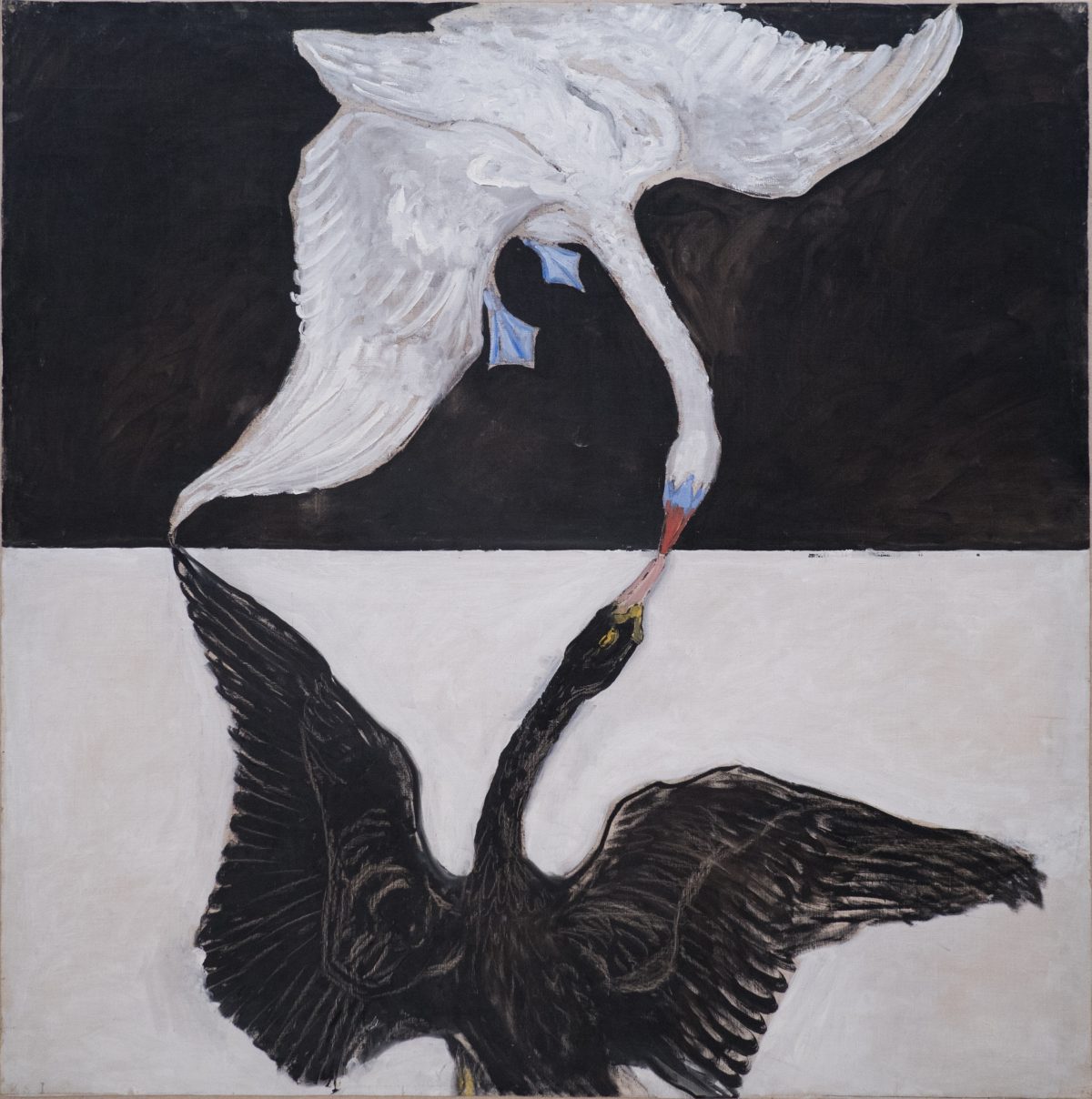
Group IX/SUW, The Swan, No. 1, 1915
Klint’s works are captivating and utterly gorgeous. But sexism is not the only reason we didn’t know more of her back then and too little of her now. When she died in 1944, Klint stipulated in her will that her work – 1,200 paintings, 100 texts and 26,000 pages of notes – should not be shown until 20 years after her death. It was not until the 1986 Los Angeles show The Spiritual in Art that her work was seen in public.
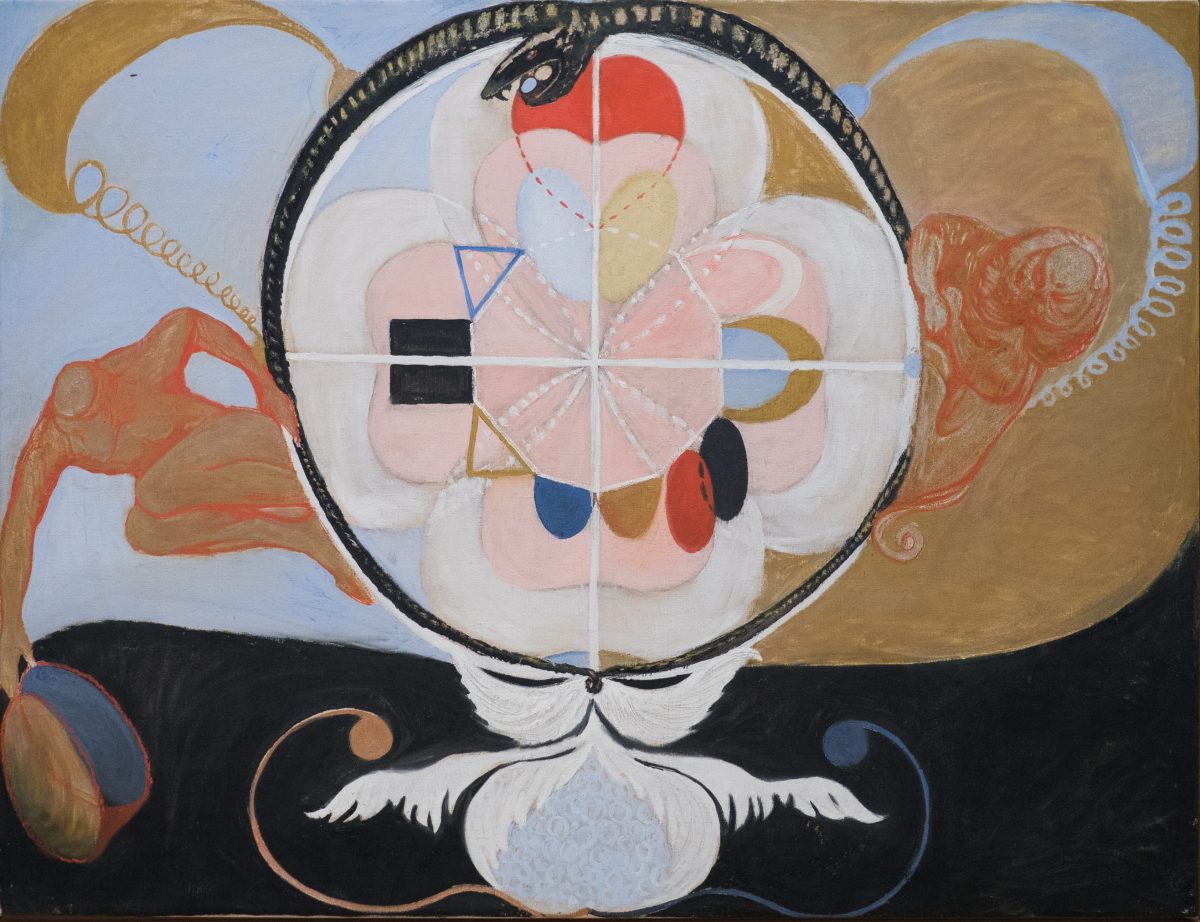
Evolution, No. 13, Group VI, 1908
“Mans perceptions are not bounded by organs of perception, he perceives more than sense (tho’ ever so acute) can discover,” said William Blake. But perhaps more apt are these words from Ambelin Kwaymullina of the Bailgu and Njamal people of the Pilbara in Western Australia. In Seeing the Light: Aboriginal law, learning and sustainable living in country, he has a word about who was really first to draw the unseen and why the abstract is the universal:
“Imagine a pattern. This pattern is stable, but not fixed. Think of it in as many dimensions as you like – but it has more than three. This pattern has many threads of many colours, and every thread is connected to, and has a relationship with, all of the others. The individual threads are every shape of life. Some – like human, kangaroo, paperbark – are known to western science as ‘alive’; others like rock, would be called ‘non-living’. But rock is there, just the same. Human is there too, though it is neither the most or the least important thread – it is one among many; equal with the others. The pattern made by the whole is in each thread, and all the threads together make the whole. Stand close to the pattern and you can focus on a single thread; stand a little further back and you can see how that thread connects to others; stand further back still and you can see it all – and it is only once you see it all that you can recognise the pattern of the whole in every individual thread. The whole is more than its parts, and the whole is in all its parts. This is the pattern that the ancestors made. It is life, creation spirit, and it exists in country.”
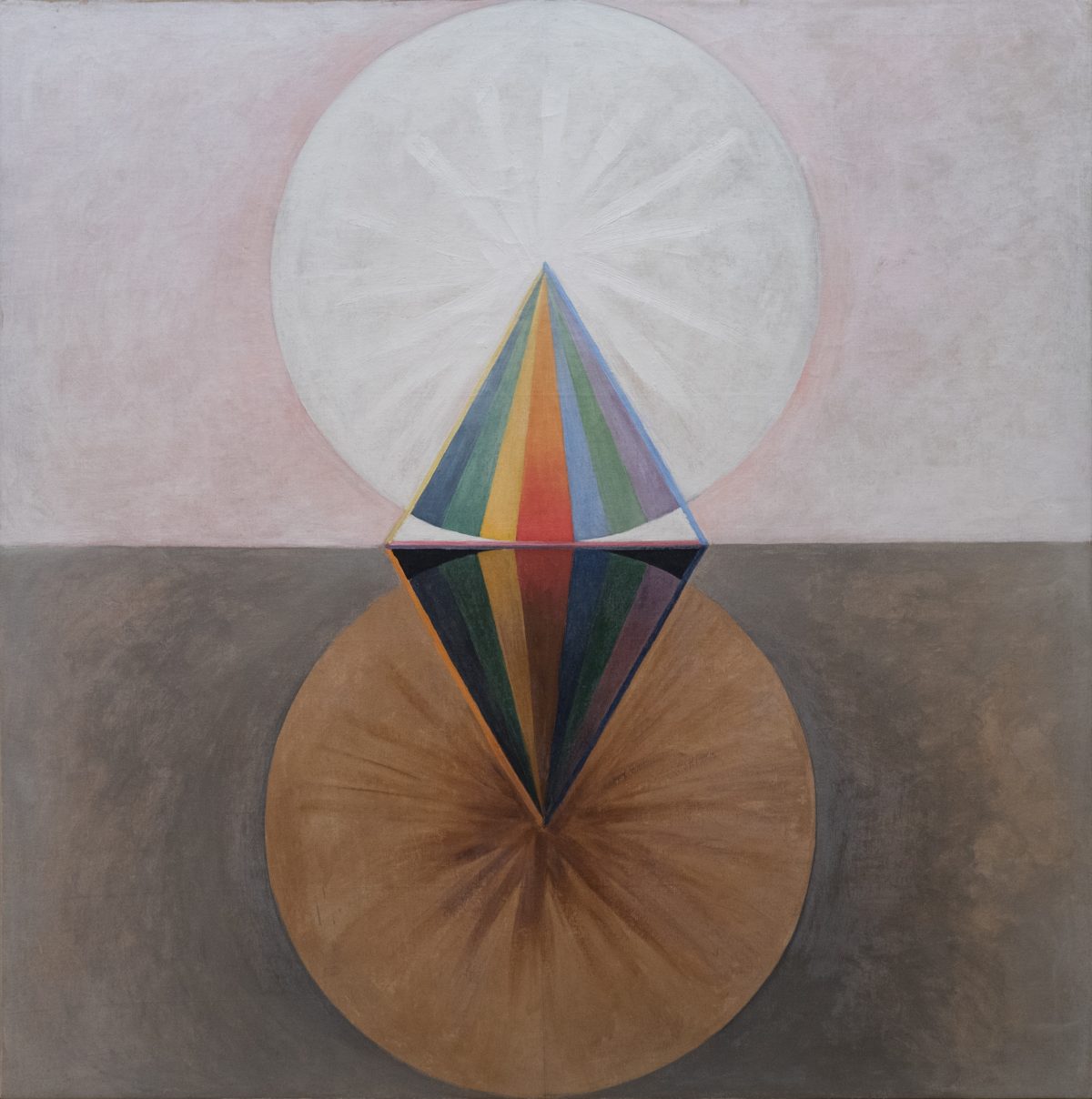
The Swan, No. 12, Group IX/SUW, 1915

Group IX/SUW, The Swan, No. 1, 1915

Evolution, No. 13, Group VI, 1908
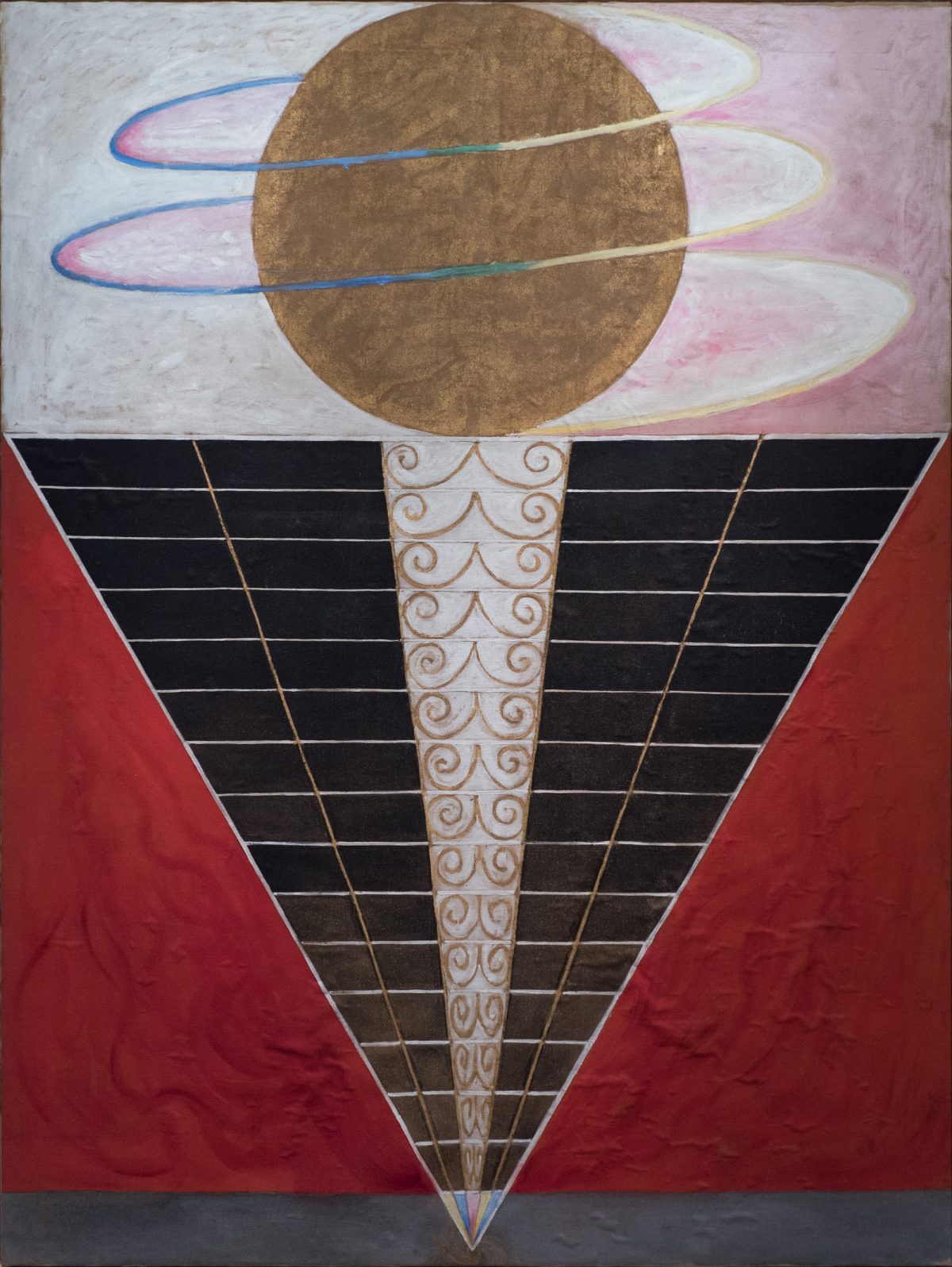
Group X, No. 2, Altarpiece, 1915
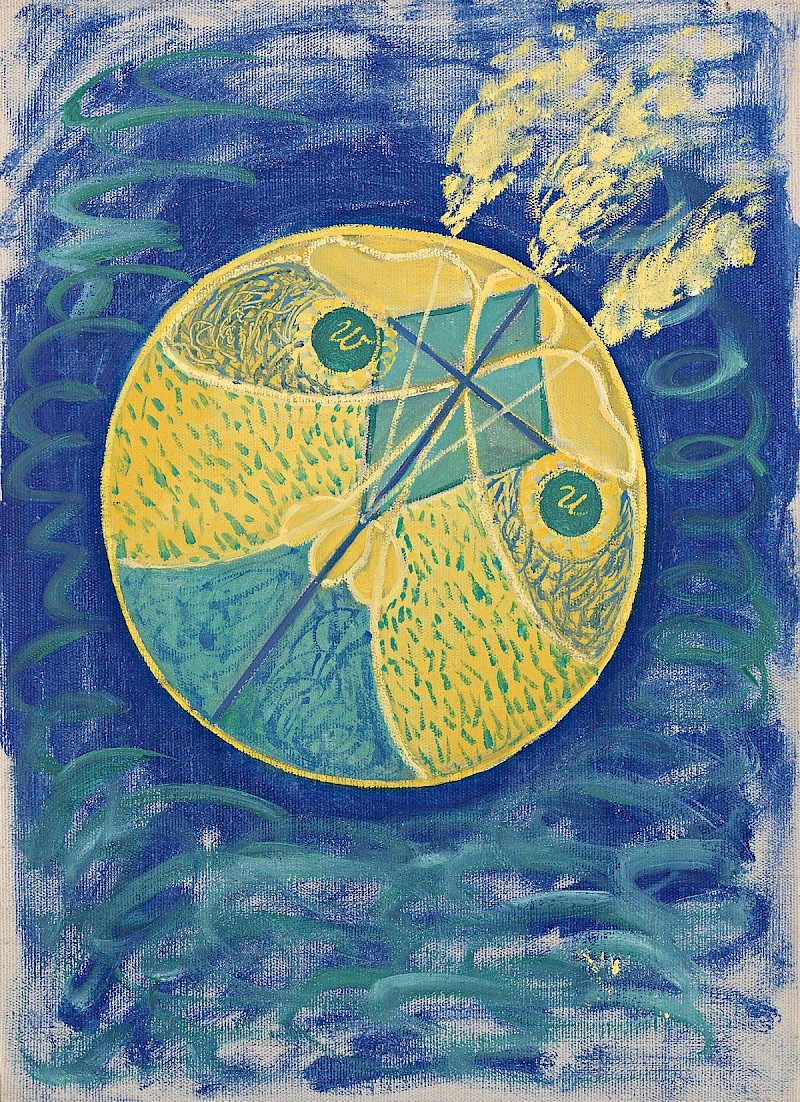
Group I No-7 – Primordial Chaos 1907
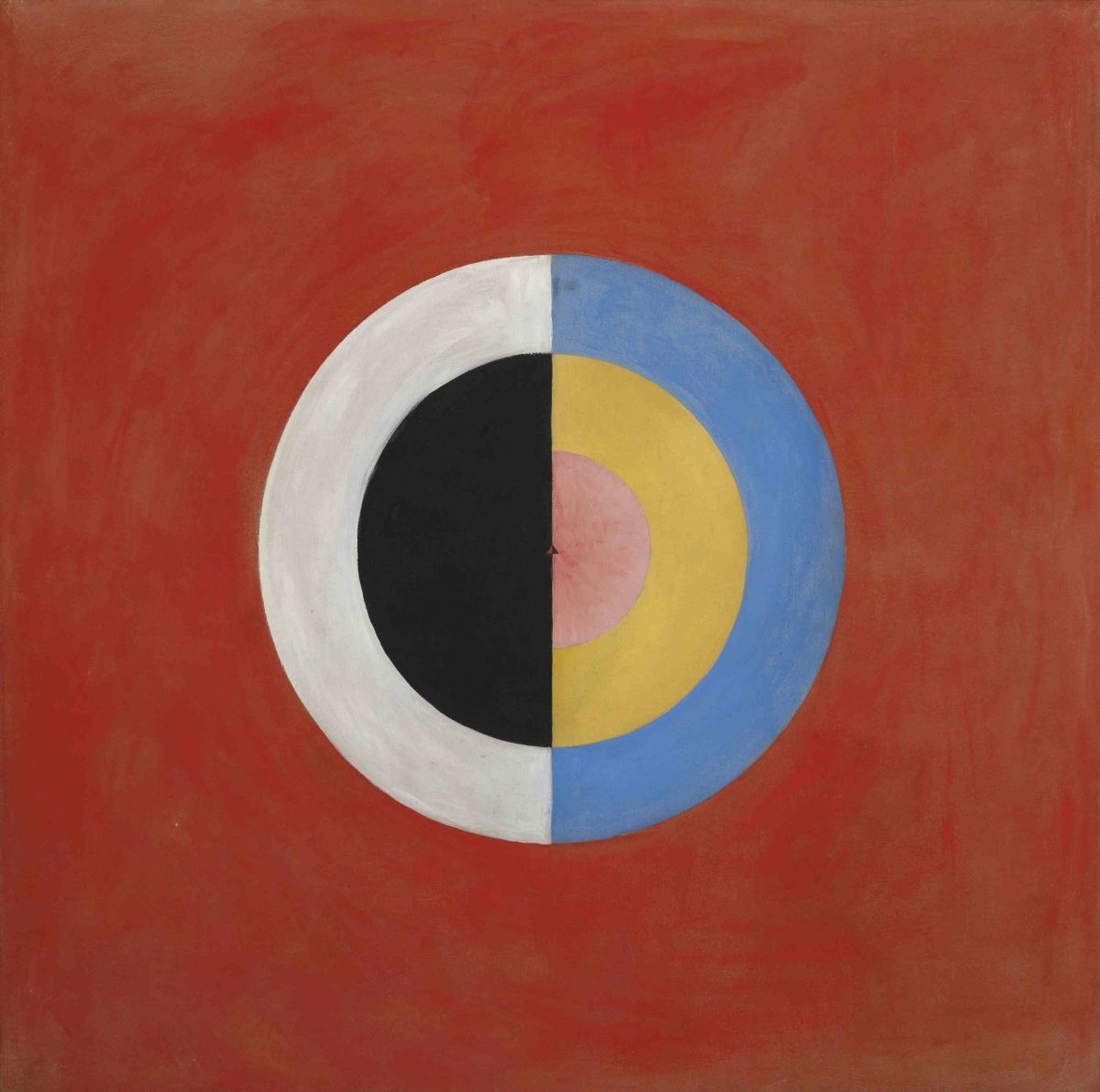
Svanen (The Swan), No. 17, Group 9, Series SUW, October 1914 – March 1915
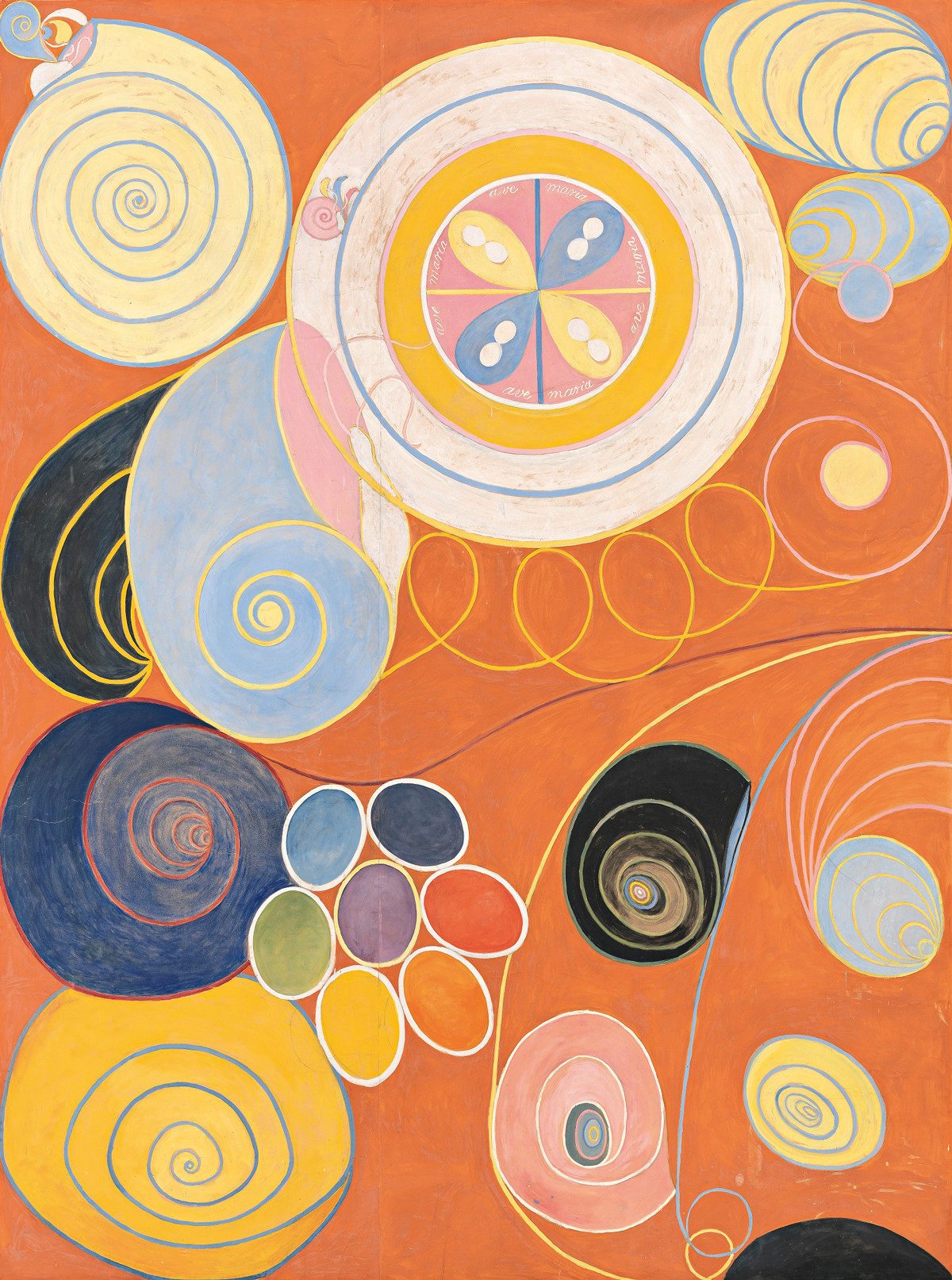
Group IV – No.3 – The Ten Largest – Youth – 1907
Would you like to support Flashbak?
Please consider making a donation to our site. We don't want to rely on ads to bring you the best of visual culture. You can also support us by signing up to our Mailing List. And you can also follow us on Facebook, Instagram and Twitter. For great art and culture delivered to your door, visit our shop.


